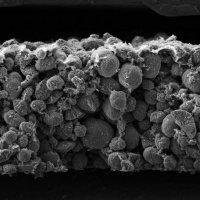Researchers at the Technical University of Munich (TUM) say they are a step closer to identifying the causes of age related storage capacity loss in lithium-ion batteries.
While lithium-ion batteries have been used in devices since 1991, little is known about aging effects that result in their loss of storage capacity.
This aging effect starts with the very first charge (the formation step), with batteries losing up to ten percent of their capacity in the process; with subsequent charge/discharge cycles slowly building on the effect. Capacity is also decreased during storage above room temperature.
There’s been a number of theories about the causes; but no definitive explanation yet, but TUM scientists at the Chair of Technical Electrochemistry and from the FRM II are working towards closing this gap in knowledge.
Using various methodologies including X-ray diffraction, impedance measurements and prompt gamma activation analysis (PGAA), the researchers have been running tests batteries with graphite anodes and nickel-manganese-cobalt cathodes.
The significant capacity loss in the formation step is caused by the build-up of a pacifying layer on the anode that consumes active lithium, but also protects the electrolyte from decomposition at the anode.
“The research group determined two key mechanisms for the loss of capacity during operation: The active lithium in the cell is slowly used up in various side reactions and is thus no longer available. The process is very temperature dependent: At 25 °C the effect is relatively weak but becomes quite strong at 60 °C,” says a report on the work.
“When charging and discharging cells with a higher upper cut off potential (4.6 V), cell resistance increases rapidly. The transition metals deposited on the anode may increase the conductivity of the pacifying layer and thereby speed up the decomposition of the electrolyte.”
Instead of the trial-and-error approach used by battery manufacturers to date to find the right balance between electrode material and lithium, companies can use the team’s insights to tweak their processes.
“Possibilities include additives that improve the build-up of the pacifying layer, for example, or modifications of the cathode surface,” said Irmgard Buchberger, a PhD student at TU Munich’s Department of Electrochemistry.
Longer lasting lithium ion batteries would not only mean better return on battery energy storage investment, but also conservation of lithium and other resources.














































